
 |
LMLK Forgery Detection |
|
LMLK Home Biblical Accounts NonBiblical Accounts Theories HBRN MMST SUKE ZYF Generic x (cannot classify) 2-Top 2-Divided 2-Undivided 4-Cursory 4-Lapidarist Jars Personal Seals Incisions Paleography Typologies Corpus Stratigraphy Geography Displays Publications Credits Updates 
|
Several antiquities dealers have either offered, or been offered, genuine ancient handles with suspicious-looking seal impressions (such as this one formerly in the private collection of Michael Welch). Here are some tips to help spot them:
To further illustrate some of the points above, see the photos below. They are grouped in pairs since some of the features are easier to recognize under alternate lighting. The first 2 are of a forged impression followed by 2 genuine impressions for contrast. |
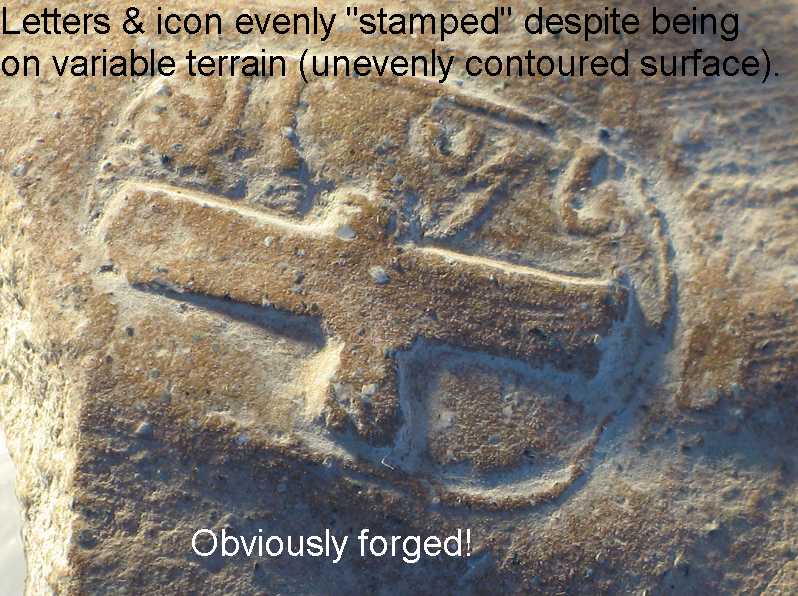
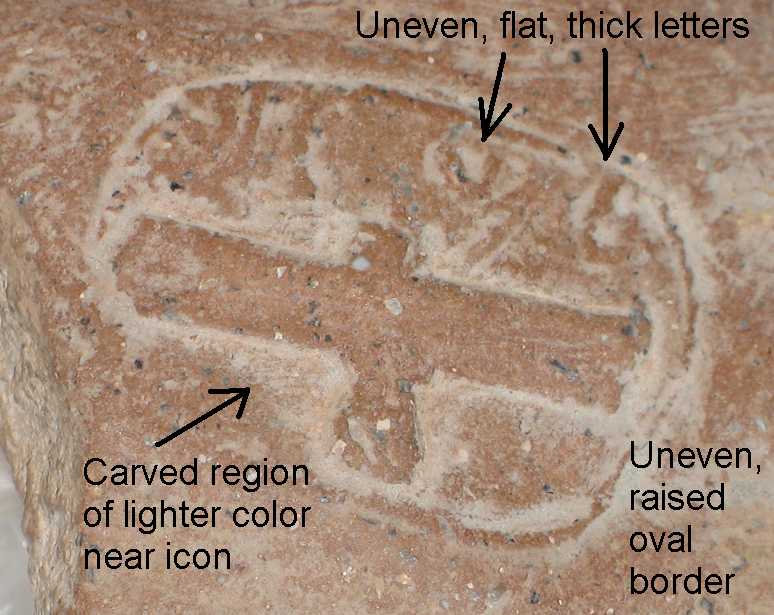 The next 2 photos are of Redondo Beach #15, which contains a definitely genuine stamp, though there is no reliable method of proving that the Circles are ancient since they were incised after the jar was fired: 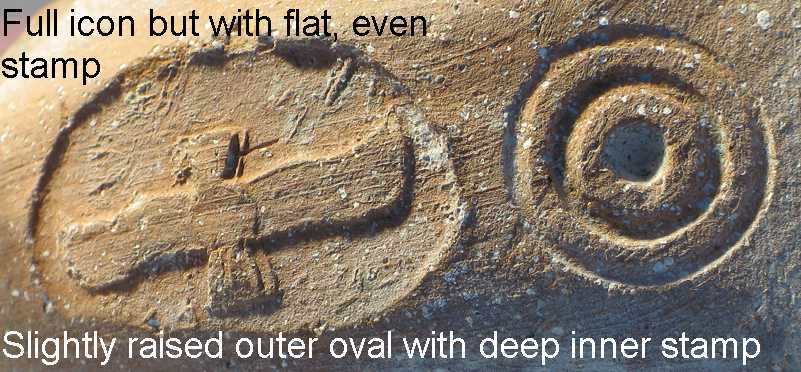
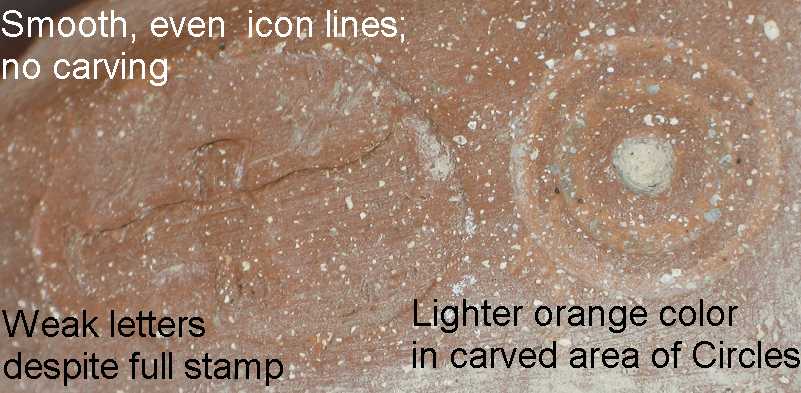 The next 2 photos are of Redondo Beach #53: 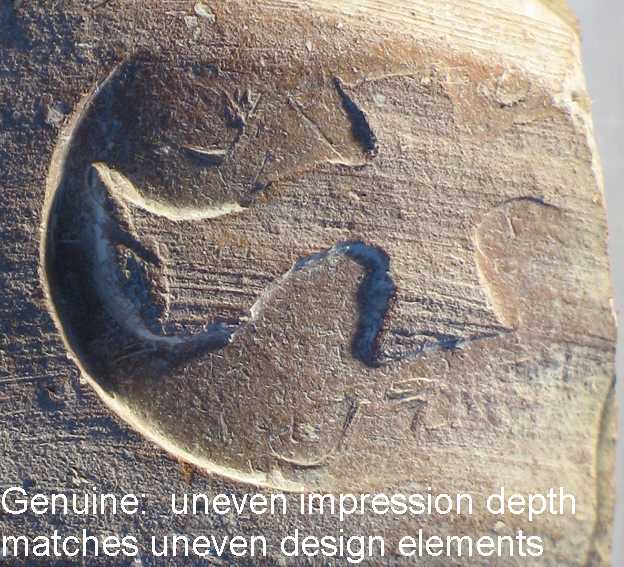
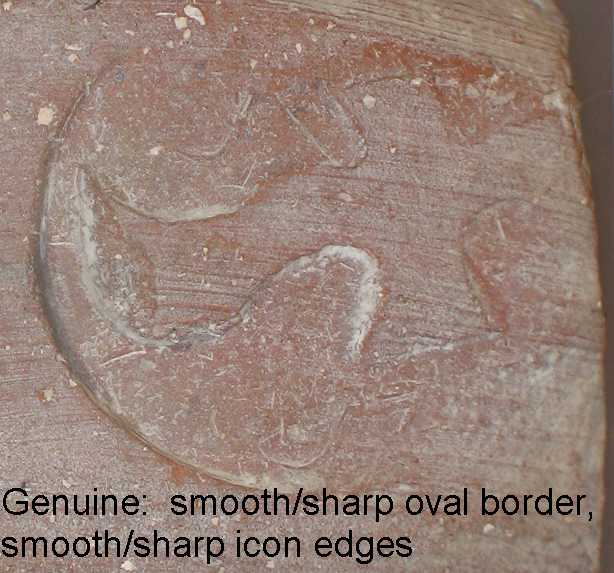 The next 2 photos were taken on oblique angles to highlight the differences between a genuine seal impression that was made in wet clay before being fired, vs. a carved impression made in fired clay. The first one is Redondo Beach #62: 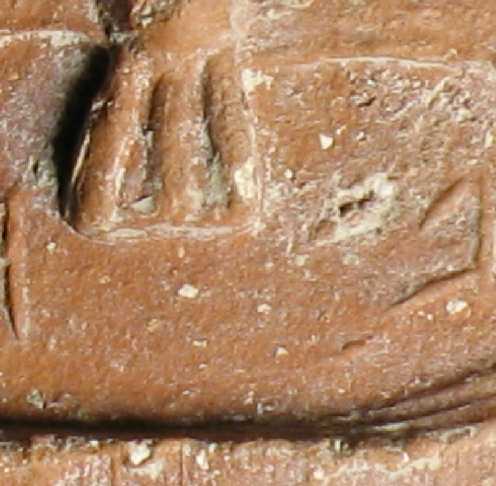 Notice the sharp smooth edges of the icon, letters, & oval border where they join the flat background. Also notice the different heights of the letters, icon, & border. In the forgery below, notice the carved outlines along those same features, & their relatively equal heights: 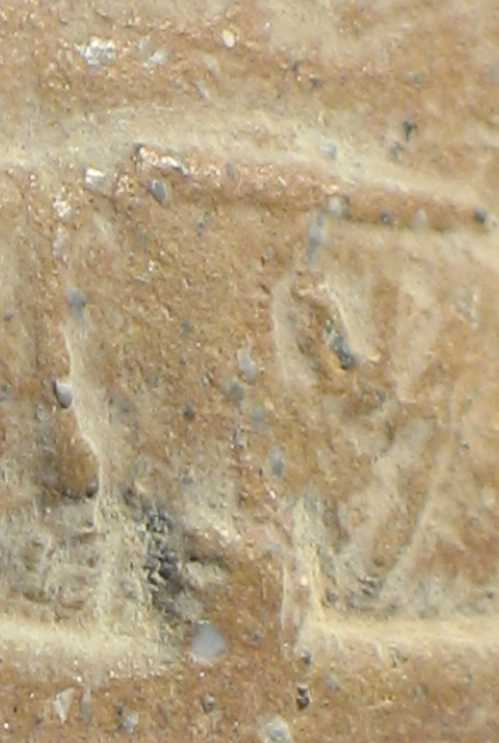
"Thus shall ye speak to Hezekiah, king of Judah, saying, 'Let not thy God in whom thou trustest deceive thee, saying Jerusalem shall not be given into the hand of the king of Assyria.'"--2Kings 19:10, Isaiah 37:10 |
|
Number of visits: |
This page was created on August 22, 2009, & last updated on August 22, 2009 |